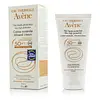What's inside
What's inside
 Key Ingredients
Key Ingredients

 Benefits
Benefits

 Concerns
Concerns

 Ingredients Side-by-side
Ingredients Side-by-side

Water
Skin ConditioningTitanium Dioxide
Cosmetic ColorantIsodecyl Neopentanoate
EmollientTriethylhexanoin
MaskingC12-15 Alkyl Benzoate
AntimicrobialGlycerin
HumectantCyclopentasiloxane
EmollientPolyglyceryl-4 Isostearate
EmulsifyingAlumina
AbrasiveCetyl PEG/PPG-10/1 Dimethicone
EmulsifyingHexyl Laurate
EmollientC30-45 Alkyl Methicone
EmollientStearic Acid
CleansingC30-45 Olefin
Skin ConditioningCyclohexasiloxane
EmollientCaprylic/Capric Triglyceride
MaskingCaprylyl Glycol
EmollientDisodium EDTA
CI 77492
Cosmetic ColorantOctyldodecanol
EmollientPentaerythrityl Tetra-Di-T-Butyl Hydroxyhydrocinnamate
AntioxidantSilica Dimethyl Silylate
EmollientSilk Amino Acids
HumectantSodium Chloride
MaskingSorbic Acid
PreservativeTalc
AbrasiveCI 77891
Cosmetic ColorantTocopheryl Glucoside
EmollientXanthan Gum
EmulsifyingWater, Titanium Dioxide, Isodecyl Neopentanoate, Triethylhexanoin, C12-15 Alkyl Benzoate, Glycerin, Cyclopentasiloxane, Polyglyceryl-4 Isostearate, Alumina, Cetyl PEG/PPG-10/1 Dimethicone, Hexyl Laurate, C30-45 Alkyl Methicone, Stearic Acid, C30-45 Olefin, Cyclohexasiloxane, Caprylic/Capric Triglyceride, Caprylyl Glycol, Disodium EDTA, CI 77492, Octyldodecanol, Pentaerythrityl Tetra-Di-T-Butyl Hydroxyhydrocinnamate, Silica Dimethyl Silylate, Silk Amino Acids, Sodium Chloride, Sorbic Acid, Talc, CI 77891, Tocopheryl Glucoside, Xanthan Gum
Water
Skin ConditioningEthylhexyl Methoxycinnamate
UV AbsorberAlcohol
AntimicrobialC12-15 Alkyl Benzoate
AntimicrobialDiethylamino Hydroxybenzoyl Hexyl Benzoate
UV FilterBis-Ethylhexyloxyphenol Methoxyphenyl Triazine
Skin ConditioningDibutyl Adipate
EmollientTitanium Dioxide
Cosmetic ColorantDimethicone
EmollientVp/Eicosene Copolymer
Cyclodextrin
AbsorbentEthylhexyl Triazone
UV AbsorberMethylene Bis-Benzotriazolyl Tetramethylbutylphenol
UV FilterTocopherol
AntioxidantPolyglyceryl-2 Dipolyhydroxystearate
Skin ConditioningSilica
AbrasiveDecyl Glucoside
CleansingTriethanolamine
BufferingXanthan Gum
EmulsifyingAcrylates/C10-30 Alkyl Acrylate Crosspolymer
Emulsion StabilisingTrisodium Ethylenediamine Disuccinate
Lauryl Glucoside
CleansingBHT
AntioxidantPropylene Glycol
HumectantWater, Ethylhexyl Methoxycinnamate, Alcohol, C12-15 Alkyl Benzoate, Diethylamino Hydroxybenzoyl Hexyl Benzoate, Bis-Ethylhexyloxyphenol Methoxyphenyl Triazine, Dibutyl Adipate, Titanium Dioxide, Dimethicone, Vp/Eicosene Copolymer, Cyclodextrin, Ethylhexyl Triazone, Methylene Bis-Benzotriazolyl Tetramethylbutylphenol, Tocopherol, Polyglyceryl-2 Dipolyhydroxystearate, Silica, Decyl Glucoside, Triethanolamine, Xanthan Gum, Acrylates/C10-30 Alkyl Acrylate Crosspolymer, Trisodium Ethylenediamine Disuccinate, Lauryl Glucoside, BHT, Propylene Glycol
 Reviews
Reviews

Ingredients Explained
These ingredients are found in both products.
Ingredients higher up in an ingredient list are typically present in a larger amount.
C12-15 Alkyl Benzoate is made up of Benzoic Acid and long chain alcohols. It has a low molecular weight.
C12-15 Alkyl Benzoate is an emollient and texture enhancer. Due to its solubility, it is often used in sunscreens to help evenly distribute active ingredients.
As an emollient, C12-15 Alkyl Benzoate helps soften and hydrate your skin. Emollients create a film on your skin that traps moisture within.
This ingredient has been reported to cause eye irritation.
Learn more about C12-15 Alkyl BenzoateTitanium dioxide is a mineral UV filter widely used in sunscreens and cosmetics.
It is one of only two UV filters officially classified as “mineral” by regulatory agencies, the other being zinc oxide.
Titanium dioxide provides broad-spectrum protection mostly in the UVB and UVAII range, with some protection in the UVAI range.
While its UVA protection isn’t as strong as zinc oxide’s, the difference is minor.
A common myth is that mineral UV filters reflect UV light. However, modern research shows titanium dioxide absorbs UV radiation like chemical filters (~95% absorption & 5% reflection).
Thanks to its non-irritating nature, titanium dioxide is suitable for sensitive, acne-prone, or redness-prone skin. It is unlikely to cause "eye sting" like other sunscreen ingredients.
A major drawback of this ingredient is its white cast and thick texture. This is why mineral sunscreens often leave a white cast and are less cosmetically elegant than chemical/hybrid sunscreens.
To improve white cast and spreadability, micronized or nano-sized titanium dioxide is often used.
There are ongoing concerns surrounding nano-titanium oxide's impact on marine ecosystems.
There is no conclusive evidence that any form of titanium oxide (or any other sunscreen ingredients) will cause harm to marine ecosystems or coral reefs. The science is still developing but many consumers are keeping a close eye on this issue.
Please note, many destinations have reef-safety sunscreen rules. For instance, the U.S. Virgin Islands advises all visitors to use non-nano mineral sunscreens.
Nano mineral sunscreens once raised safety concerns about absorption into skin.
Extensive research has shown that they do not penetrate healthy or damaged skin; they remain safely on the surface and the top layer of dead skin (stratum corneum).
You'll likely find titanium dioxide bundled with alumina, silica, or dimethicone. These ingredients help make titanium dioxide highly photostable; this prevents it from interacting with other formula components under UV light.
Learn more about Titanium DioxideWater. It's the most common cosmetic ingredient of all. You'll usually see it at the top of ingredient lists, meaning that it makes up the largest part of the product.
So why is it so popular? Water most often acts as a solvent - this means that it helps dissolve other ingredients into the formulation.
You'll also recognize water as that liquid we all need to stay alive. If you see this, drink a glass of water. Stay hydrated!
Learn more about WaterXanthan gum is used as a stabilizer and thickener within cosmetic products. It helps give products a sticky, thick feeling - preventing them from being too runny.
On the technical side of things, xanthan gum is a polysaccharide - a combination consisting of multiple sugar molecules bonded together.
Xanthan gum is a pretty common and great ingredient. It is a natural, non-toxic, non-irritating ingredient that is also commonly used in food products.
Learn more about Xanthan Gum